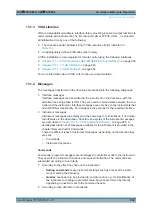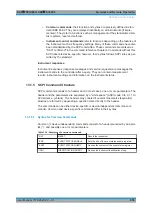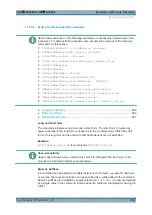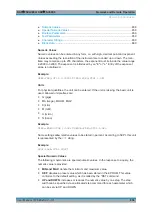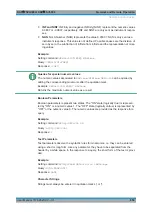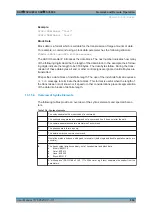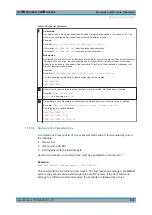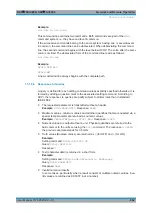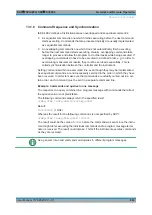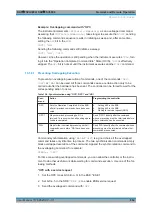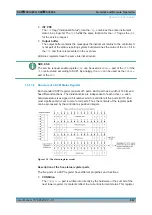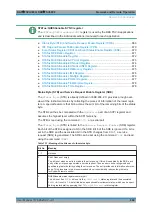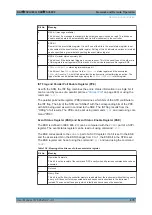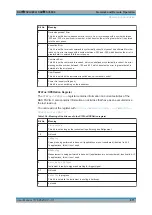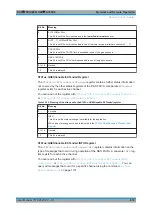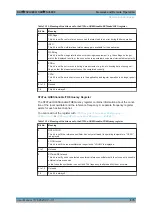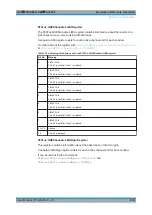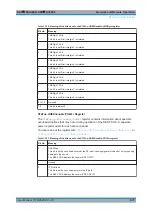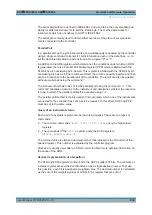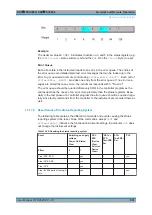
Network and Remote Operation
R&S
®
FSVA3000/ R&S
®
FSV3000
668
User Manual 1178.8520.02 ─ 01
part can only be read, but not written into or cleared. Its contents are not affected
by reading.
●
PTRansition / NTRansition
The two transition register parts define which state transition of the
CONDition
part (none, 0 to 1, 1 to 0 or both) is stored in the
EVENt
part.
The
Positive-TRansition
part acts as a transition filter. When a bit of the
CONDition
part is changed from 0 to 1, the associated
PTR
bit decides whether
the
EVENt
bit is set to 1.
–
PTR bit =1: the
EVENt
bit is set.
–
PTR bit =0: the
EVENt
bit is not set.
This part can be written into and read as required. Its contents are not affected by
reading.
The
Negative-TRansition
part also acts as a transition filter. When a bit of the
CONDition
part is changed from 1 to 0, the associated
NTR
bit decides whether
the
EVENt
bit is set to 1.
–
NTR bit =1: the
EVENt
bit is set.
–
NTR bit =0: the
EVENt
bit is not set.
This part can be written into and read as required. Its contents are not affected by
reading.
●
EVENt
The
EVENt
part indicates whether an event has occurred since the last reading, it
is the "memory" of the condition part. It only indicates events passed on by the
transition filters. It is permanently updated by the instrument. This part can only be
read by the user. Reading the register clears it. This part is often equated with the
entire register.
●
ENABle
The
ENABle
part determines whether the associated
EVENt
bit contributes to the
sum bit (see below). Each bit of the
EVENt
part is "ANDed" with the associated
ENABle
bit (symbol '&'). The results of all logical operations of this part are passed
on to the sum bit via an "OR" function (symbol '+').
ENABle
bit = 0: the associated
EVENt
bit does not contribute to the sum bit
ENABle
bit = 1: if the associated
EVENt
bit is "1", the sum bit is set to "1" as well.
This part can be written into and read by the user as required. Its contents are not
affected by reading.
Sum bit
The sum bit is obtained from the
EVENt
and
ENABle
part for each register. The result
is then entered into a bit of the
CONDition
part of the higher-order register.
The instrument automatically generates the sum bit for each register. Thus an event
can lead to a service request throughout all levels of the hierarchy.
13.1.7.3
Contents of the Status Registers
In the following sections, the contents of the status registers are described in more
detail.
Remote Control Basics

